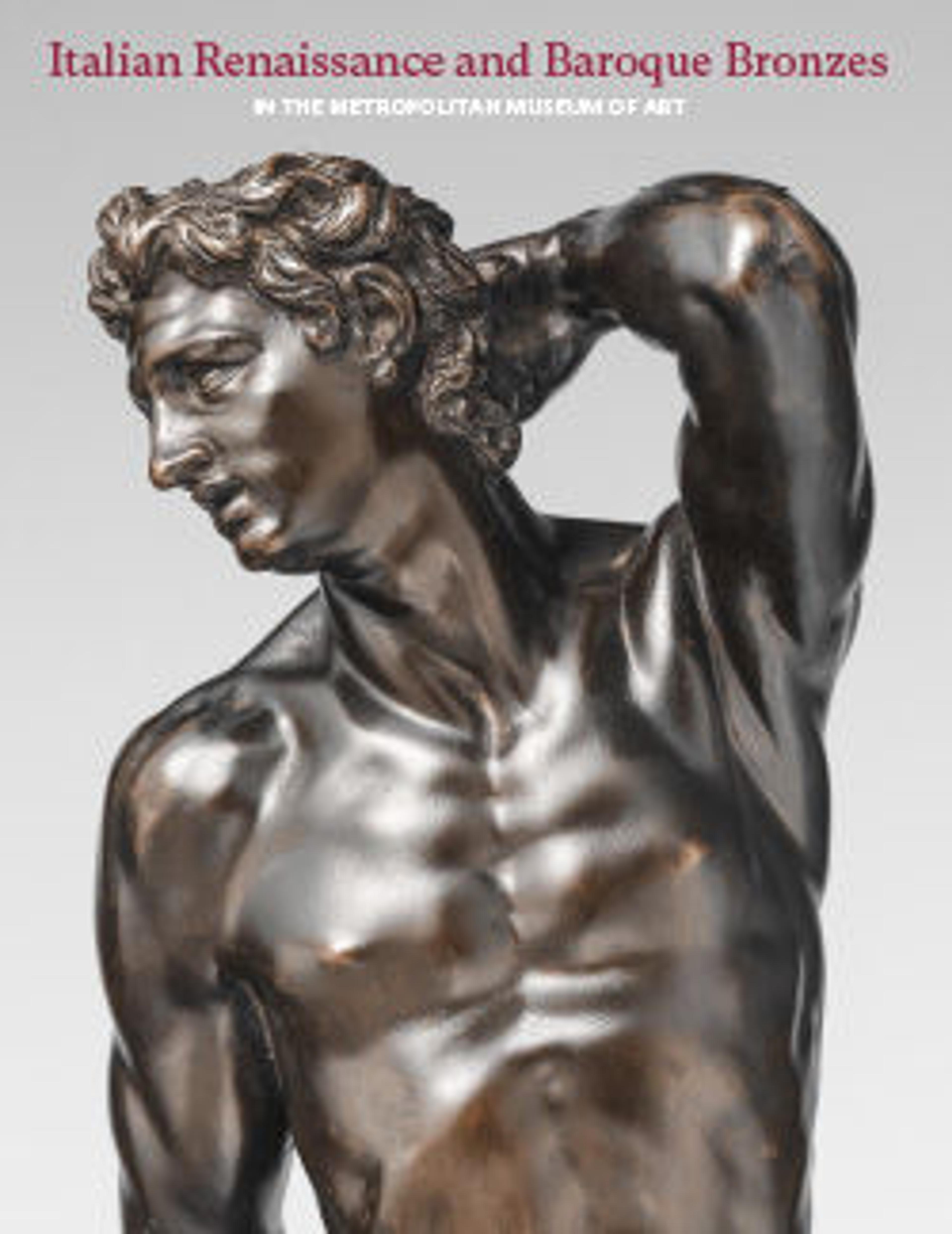Farnese Hercules
This is a reduction of the first-century B.C. marble signed by Glykon of Athens, which in turn is a Roman copy of the Greek original by Lysippos, sometimes called the “Weary Hercules.” It was discovered in 1540 in the Baths of Caracalla in Rome, entered the Farnese collections (hence is universally known as the Farnese Hercules), and is among the glories of the Museo Archeologico Nazionale, Naples.
The Bargello has a statuette by Pietro da Barga, identical in style and technique to ours, except that it is ungilt, one of a series of copies of famous works commissioned by Cardinal Ferdinando de’ Medici to decorate a large cabinet. It appears in the inventory of his garderobe, drawn up in Rome, as a Hercules said by Pietro “to be a portrait of the one belonging to Cardinal Farnese.”[1] Ours is distinguished by the gilding, which only coats the front, as the back was not meant to be seen (it probably occupied a niche). Typically for Pietro, the piece was thinly and poorly cast, necessitating numerous round plugs, but he probably didn’t care much, his focus being the ensemble: likely a piece of furniture such as the cardinal’s desk that incorporated several statuettes.
-JDD
Footnotes
(For key to shortened references see bibliography in Allen, Italian Renaissance and Baroque Bronzes in The Metropolitan Museum of Art. NY: The Metropolitan Museum of Art, 2022.)
1. Untermyer 1977, pp. 165–66.
2. For a radiograph, see p. 34, fig. 4. The use of threaded plugs indicates that this cast of Pietro’s model dates to after the end of the sixteenth century. R. Stone/TR, November 14, 2010
The Bargello has a statuette by Pietro da Barga, identical in style and technique to ours, except that it is ungilt, one of a series of copies of famous works commissioned by Cardinal Ferdinando de’ Medici to decorate a large cabinet. It appears in the inventory of his garderobe, drawn up in Rome, as a Hercules said by Pietro “to be a portrait of the one belonging to Cardinal Farnese.”[1] Ours is distinguished by the gilding, which only coats the front, as the back was not meant to be seen (it probably occupied a niche). Typically for Pietro, the piece was thinly and poorly cast, necessitating numerous round plugs, but he probably didn’t care much, his focus being the ensemble: likely a piece of furniture such as the cardinal’s desk that incorporated several statuettes.
-JDD
Footnotes
(For key to shortened references see bibliography in Allen, Italian Renaissance and Baroque Bronzes in The Metropolitan Museum of Art. NY: The Metropolitan Museum of Art, 2022.)
1. Untermyer 1977, pp. 165–66.
2. For a radiograph, see p. 34, fig. 4. The use of threaded plugs indicates that this cast of Pietro’s model dates to after the end of the sixteenth century. R. Stone/TR, November 14, 2010
Artwork Details
- Title:Farnese Hercules
- Modeler:After a model by Pietro da Barga (Italian, Florence, active 1574–88)
- Date:modeled ca. 1576; cast 17th century
- Culture:Italian, Florence
- Medium:Bronze
- Dimensions:Overall (confirmed): 9 × 4 1/4 × 3 1/4 in. (22.9 × 10.8 × 8.3 cm)
- Classification:Sculpture-Bronze
- Credit Line:Gift of Irwin Untermyer, 1964
- Object Number:64.101.1462
- Curatorial Department: European Sculpture and Decorative Arts
More Artwork
Research Resources
The Met provides unparalleled resources for research and welcomes an international community of students and scholars. The Met's Open Access API is where creators and researchers can connect to the The Met collection. Open Access data and public domain images are available for unrestricted commercial and noncommercial use without permission or fee.
To request images under copyright and other restrictions, please use this Image Request form.
Feedback
We continue to research and examine historical and cultural context for objects in The Met collection. If you have comments or questions about this object record, please contact us using the form below. The Museum looks forward to receiving your comments.
